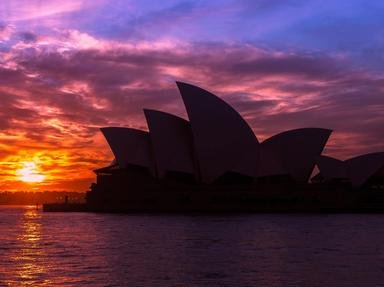Quiz Answer Key and Fun Facts
1. Indigenous Australians have occupied the site now known as Brisbane for many years before European colonisation. Approximately how long before?
2. The first settlement in what was to become the state of Queensland was on the site now occupied by Brisbane.
3. While Brisbane in the mid to late 19th century thrived and population boomed, the site itself had a major geographical fault which was?
4. In 1925 the population of Brisbane doubled. What happened?
5. In 1942 the Battle of Brisbane was fought. With whom did the Australian armed forces engage?
6. Because of the Brisbane River, which meanders through the city of Brisbane with its many reaches and turns, the city is a city of bridges. There is one bridge that is iconic and is often depicted as a representation of Brisbane. What is its name?
7. In a post-war Brisbane, it had developed a reputation as a "big country town", somewhat of a stigma. Two events occurred in the 1980s to dispel that image. What were they?
8. Whilst Brisbane was progressing faster than it ever had before, it recognised that some traditional aspects of Queensland culture needed to remain. Brisbane was the leading location of a style of house unique to its state. What is the name of this now protected style of home?
9. Brisbane being a quintessential Australian city, has several nicknames, none of them official. Yet as Brisbane crossed into the 21st century one nickname , based on one its of its attributable features became a name of honour. Which nickname is this?
10. Brisbane is the hub of a wider urban community that is called South East Queensland. Which of the following Queensland places is not part of this larger area?
Source: Author
1nn1
This quiz was reviewed by FunTrivia editor
gtho4 before going online.
Any errors found in FunTrivia content are routinely corrected through our feedback system.
